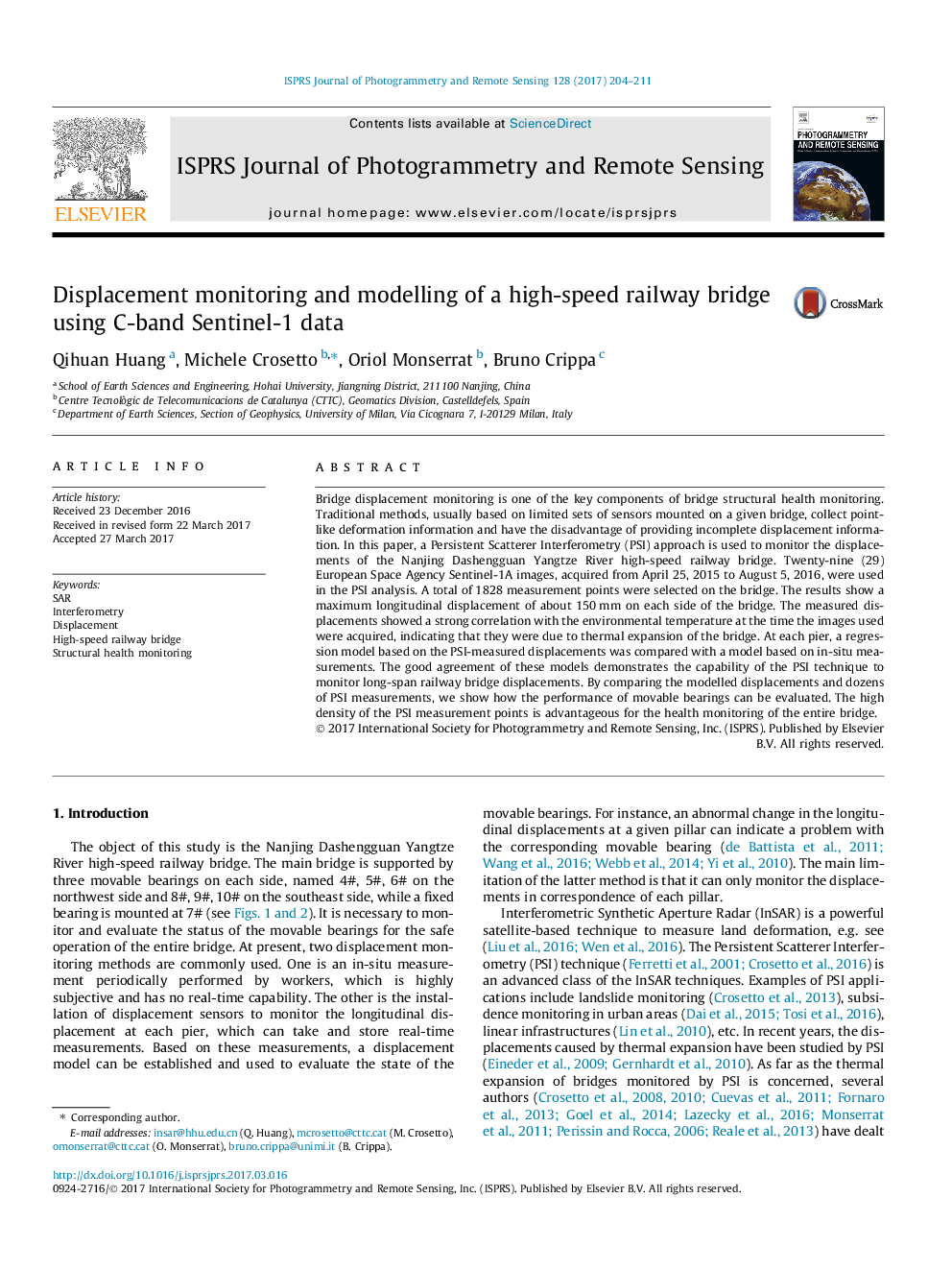| Article ID | Journal | Published Year | Pages | File Type |
|---|---|---|---|---|
| 4972861 | ISPRS Journal of Photogrammetry and Remote Sensing | 2017 | 8 Pages |
Abstract
Bridge displacement monitoring is one of the key components of bridge structural health monitoring. Traditional methods, usually based on limited sets of sensors mounted on a given bridge, collect point-like deformation information and have the disadvantage of providing incomplete displacement information. In this paper, a Persistent Scatterer Interferometry (PSI) approach is used to monitor the displacements of the Nanjing Dashengguan Yangtze River high-speed railway bridge. Twenty-nine (29) European Space Agency Sentinel-1A images, acquired from April 25, 2015 to August 5, 2016, were used in the PSI analysis. A total of 1828 measurement points were selected on the bridge. The results show a maximum longitudinal displacement of about 150Â mm on each side of the bridge. The measured displacements showed a strong correlation with the environmental temperature at the time the images used were acquired, indicating that they were due to thermal expansion of the bridge. At each pier, a regression model based on the PSI-measured displacements was compared with a model based on in-situ measurements. The good agreement of these models demonstrates the capability of the PSI technique to monitor long-span railway bridge displacements. By comparing the modelled displacements and dozens of PSI measurements, we show how the performance of movable bearings can be evaluated. The high density of the PSI measurement points is advantageous for the health monitoring of the entire bridge.
Related Topics
Physical Sciences and Engineering
Computer Science
Information Systems
Authors
Qihuan Huang, Michele Crosetto, Oriol Monserrat, Bruno Crippa,
